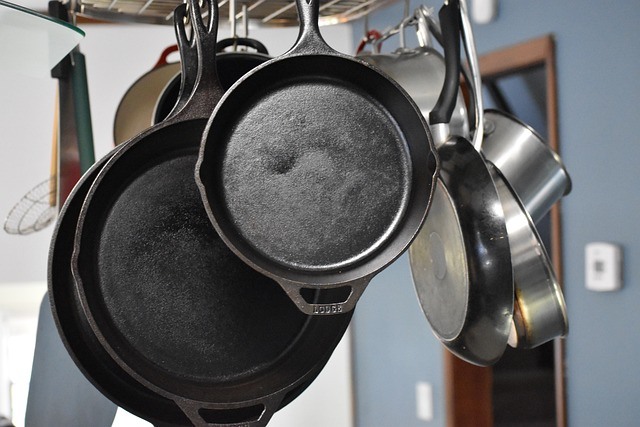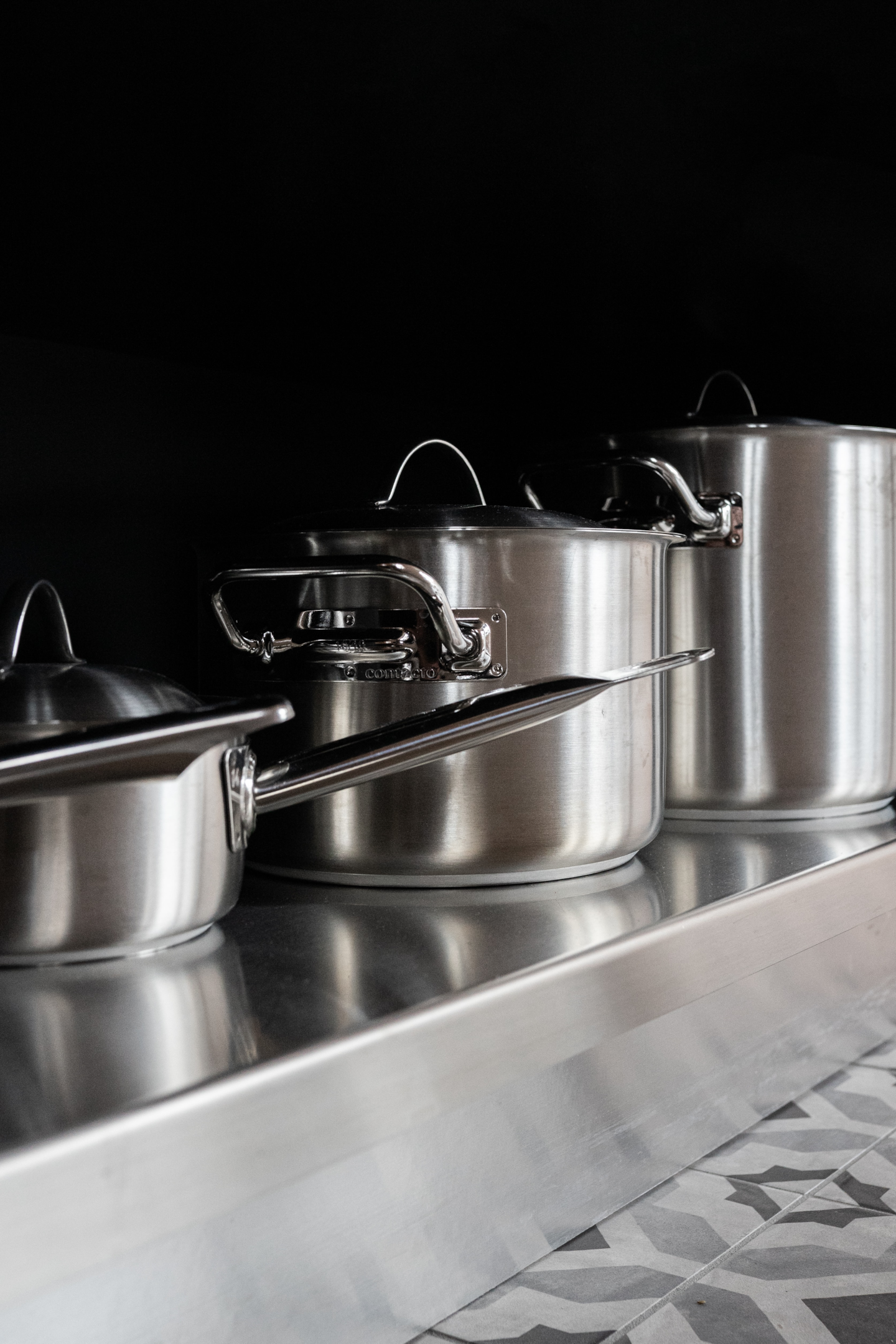Carbon and stainless steel are two of the most popular materials used in metal fabrication. Both materials have their own unique characteristics and advantages, making them suitable for different applications.
Stainless steels and carbon steel both have their own unique advantages and disadvantages. Depending on your project, one material may be better suited than the other. Consider the cost, strength, mechanical properties, and maintenance requirements of each material before making your decision.
Carbon Steel: What You Need To Know
Carbon iron alloy is the main component of carbon steel. Carbon steels are popular choices for construction and other industrial applications. It has appropriate strength and durability than stainless steel.
However, it is also more prone to rust and has no corrosion resistance, so it is not suitable for applications that require a high degree of corrosion resistance.
Carbon steels are a versatile and affordable type of steel that can be used for a variety of applications. They are available in a range of carbon component levels, allowing them to be tailored to specific applications. With proper heat treatment, they can be made even stronger and harder, making them suitable for a variety of uses.
Classifications According to Carbon Content
These classifications range from containing up to 0.3% carbon, carbon steels that contain between 0.3% and 0.6% carbon, or high-carbon steels with more than 0.6% carbon content.
The varying mechanical properties based on the metal’s carbon content include strength, hardness, ductility, and toughness.
Low Carbon Steel
Low carbon steel has the less amount of carbon among all classifications. They are relatively soft and ductile, making them easy to form and welded easily, and heat treated for better strength and hardness, like in food cans. They also have lesser costs than other types.
Medium Carbon Steel
Medium-carbon steels are stronger and harder than low-carbon steels, but they are still relatively ductile and can be machined and welded. They are often used for parts that require greater strength, such as gears and crankshafts.
High Carbon Steel
High-carbon steels are the strongest and hardest of the carbon steels. They are difficult to form and weld. A heat treatment will, however, improve its other mechanical properties. They are often used for cutting tools, such as knives and saw blades.
Mechanical Properties of Carbon Steel
Carbon steel is known for its strength and wear resistant properties. Its carbon content is recommended for structural applications, such as bridges and buildings.
Carbon steel can be bent and shaped without breaking because of its ductility. This makes it an ideal material for items that require a certain shape, such as pipes and wires.
Its hardness makes it a good material for items that require durability, such as tools and knives. In addition to that, it can take high temperatures without having any changes in its other properties.
Carbon steel is also known for its toughness. This means that it is able to resist shock and vibration. It is an ideal material for items that require shock resistance, such as automotive components.
Stainless Steel: What It Is and Its Properties
Stainless steel is a type of metal alloy that is composed of iron, chromium, and other metals. It is known for its strength and corrosion resistant properties, making it an ideal material for a wide range of applications.
Also called inox steel, stainless steels are used in everything from stainless steel cookware to medical technology, and it is even used in the construction of buildings.
The main component of stainless steel is iron, which is combined with chromium and other metals to create the metal alloy.
Chromium is applied as stainless steel’s protective layer. The chromium layer prevents oxidation, which is what causes rust. In addition to that, its iron content makes the stainless steel a low maintenance metal.
The other metals that are used in stainless steels can vary, but they are typically nickel, molybdenum, and nitrogen. The addition of these elements gives stainless steel its unique mechanical properties.
Stainless Steel and its Mechanical Properties
Stainless steel can be used for applications where strength and durability are important, such as in the construction of bridges and buildings. It can take high levels of stress without causing any damage to the steel.
The chromium coating against the environmental oxygen of stainless steel is perfect for applications where corrosion resistance is important, such as in the food and beverage industry that needs to avoid the metallic flavor from rust. The protective layer makes stainless steel resist corrosion even if it does not contain other alloying elements.
Stainless steel has excellent thermal properties. Its content can be used under high temperatures and still retain its strength or shape. Its resistance to high heats makes it an ideal choice for applications where heat resistance is important, such as in the aerospace industry.
Applications of Carbon and Stainless Steel

Carbon Steel Pans vs. Stainless Steel Pans
Carbon Steel Pan
When it comes to cookware, there are a variety of materials to choose from. Two of the most popular options are carbon steel cookware and stainless steel cookware. Both materials have their pros and cons, so it’s important to understand the differences between them before making a purchase.
Iron and carbon are present in carbon steel pans. A carbon steel skillet is durable and has high heat conductivity. This is what makes searing steaks good when using a carbon steel can. They also have a non-stick surface, making them ideal for cooking delicate foods.
However, a carbon steel pan is prone to rust, so it must be seasoned regularly to prevent this. Acidic foods may also remove the seasoning of carbon steel pans.
Stainless Steel cookware

Stainless steel pans are made from a combination of iron, chromium, and nickel. They are heavier than carbon steel pans, but they are also more durable and resistant to rust. Stainless steel pans also have a non-stick surface, but it’s not as effective as the one found on carbon steel pans.
This combination of metal alloys makes them resistant to rust and corrosion. They are also non-reactive, meaning they won’t react with acidic foods like tomatoes or citrus. This makes them ideal for cooking sauces and other acidic dishes.
Stainless steel cookware is durable and can handle high heat. Stainless steel pans are great for searing, sautéing, and browning foods. It can also withstand high temperature cooking, making them ideal for slow-cooking and simmering. It has alloying elements, which make stainless steel pans oven safe.
When it comes to cleaning, stainless steel pans are incredibly easy. They are dishwasher safe and can be wiped clean with a damp cloth. This also makes stainless steel pans a good choice for working in wet environments.
Both metals used for these pans have their pros and cons. Professional chefs recommend both types of cookware. They can keep the food warm by maintaining temperature.
A carbon steel pan is effective for cooking that needs lightweight, non-stick, and high heat cookware. However, if you’re looking for a more durable and rust-resistant pan, then a stainless steel pan is the better option.
High Carbon Steel Knives

This type of carbon steel is often used for making knives because it is strong and durable. It can hold an edge for a long time and can be sharpened to a very fine edge. Its matte finish adds to its attractive appearance. It is also relatively easy to work with, making it a popular choice for knife makers.
This carbon steel is not without its drawbacks, however. It is prone to rust, so it must be kept clean and dry. It is also more brittle than other types of steel, so it is more prone to breaking or chipping.
Industrial Use of Carbon Steel

Carbon steel is often used in the construction of industrial machinery and equipment. Its strength and durability properties can hold out against wear and tear. It is also relatively inexpensive, making it a cost-effective choice for many industrial applications.
Carbon steel is also used in the manufacture of pipes, valves, and other plumbing components. Many carbon steel manufacturers also use this type of metal for making train wheels and automobile body components.
Industrial Stainless Steel Applications
Stainless steel is one of the most versatile materials used in modern construction, engineering, and manufacturing. The mechanical properties of stainless steel are recommended for medical and food processing equipment to architectural and automotive components.
In the automotive industry, stainless steel is used to create a variety of components, from exhaust systems to brake discs. Its strength and durability make it an ideal material for use in high-performance vehicles. The stainless steel can be used to create decorative trim and accents for cars and trucks.
Stainless steel is used by architects for their structural projects. Aside from thatArtists even use stainless steel for sculptures.
Final Words
Carbon steel and stainless steel have different characteristics that are appropriate for different industries. Carbon steel is a good material for skillets because of its heat distribution ability, but it is more useful in industrial parts. As for stainless steel, it offers more benefits for the food and beverage industry. It also produces an attractive appearance which makes it perfect for automobiles and architectural use.


